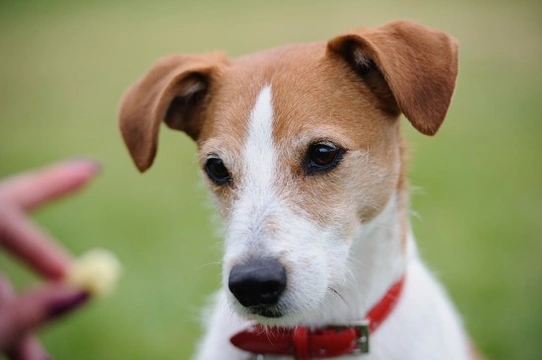
Weaning your dog away from expecting a food reward when training
Giving supplementary treats to our dogs is something that many of us enjoy doing. Not only can we use treats to provide the dog with something special now and then or to allow them to join in when the rest of the family is having something nice, treats can make for a valuable training aid. Using treats as a reward as part of the training process can help you to catch, and keep, your dog’s attention, and motivate them towards compliance and obedience too.
It is certainly fair to say that treats play an important part in the training process, and most of us continue to give treats to our dogs now and again even after their initial training period is complete. But what should you do if your dog will only obey your commands if you have a treat in your hand, or thinks that every time you put your hand into your pocket, you are going to produce something for them? This kind of behaviour can prove problematic, but it is all too easy to inadvertently end up with a dog that is obeying their food reward rather than their owner!
Coupled with this, are the issues of weight management and nutrition, as too many supplemental treats can also be bad for your dog’s health. So, what can you do if your dog’s demand or expectation for treats has gotten a little out of hand? Read on to find out!
When to offer treats
Aside from when you simply give treats for the sake of it without asking for compliance or obedience of a given task in return, you should establish how often to give treats to your dog on a sliding scale. If you are trying to teach your dog a new skill or work on something particularly challenging, you will probably need to offer a treat for every single successful compliance, both to make sure that your dog understands that they have got the message and done what you wanted, and to motivate them to keep trying!
The harder part involves maintaining your dog’s compliance after they have firmly established their understanding of your command, and you wish to phase out the usage of the food reward. It is important to be able to do this so that you can ensure that your dog complies with your command itself, rather than simply working to earn the food and refusing compliance unless they can see a treat!
Weaning your dog away from expecting a food reward every time
- Always begin your training by offering effusive praise alongside of the food reward, so that your dog becomes as keen to seek your approval as they are to receive their treat.
- Establish what your dog enjoys and classes as a reward as well as food; this might be praise, being patted, play, a particular game, a toy, or extra walks. You will then need to begin to substitute the use of these alternatives for a consistent stream of treats.
- Rank the things that you have established that your dog enjoys and classes as a reward on a sliding scale, from that which they enjoy the most (such as a food treat) to the ones lower down the list.
- Begin to establish a pattern where you use these rewards in balance to the success of your command. For slow, reluctant or half-hearted compliance, provide one of the rewards, but one of those that are lower down your dog’s sliding scale.
- For a quick, unambiguous compliance or for achieving something particularly difficult (perhaps obeying the recall command the first time, even when faced with a lot of external stimulus) make your praise effusive and offer one of the top line rewards, such as food.
- Do not give your dog any clues about what rewards might be on offer before you give your command; do not have treats nearby or in sight, or a toy that is used as a reward on hand. The trick is to teach your dog that compliance is expected, and not optional or reliant on receiving something for doing so.
- Treat the whole endeavour as a lottery for your dog; when they comply with your command, they know that they will receive something that they like (even if it is one of their lower option rewards) but they should never be able to suss out exactly what is on offer until after they have complied. This keeps your dog trying!
- When you begin following this system, you will need to offer the high value rewards (such as a food treat or something else from near the top of their wish list) more regularly than you will do later on. After your dog has come to understand that they will receive a payoff for compliance and that it may well be something excellent, they will become more amenable to compliance every time in the hope of a top level reward.
- As time goes on, gradually reduce the frequency rate at which you offer the high value rewards, normalising the use of praise or a food alternative as something to be expected. However, you should still occasionally offer a food reward too in order to keep your dog guessing, and motivated to please you in the hopes of a good payoff!



